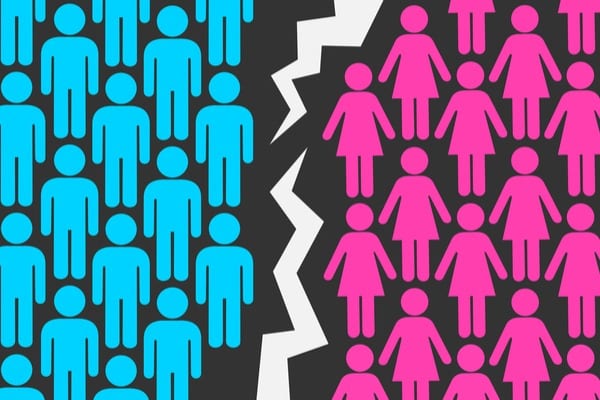Last IWD, I read a Guardian piece on #MeToo, with a range of international feminist leaders discussing the transformative nature of the movement for women and gender equality. The article’s title was ‘There’s no going back’.
A lot of people hoped – and hope – that the movement will create more meaningful conversations on men’s behaviour, stimulate deep cultural change, deliver a lasting blow to patriarchy and a convincing victory for feminism: equality.
I want that to be true. The status quo is manifestly unfair to women. As a white male I’ve been the beneficiary of a tilted playing field and I want it to change.
But I look at what is happening, and I worry it won’t. I worry that I see the patriarchy bending, but not breaking. That it’s absorbing change to ultimately repel it. I’ve previously referred to the patriarchy as the matrix for men. Perhaps this matrix is learning how to adapt to survive.
Can the patriarchy really be beaten? If the stats on the physical and economic security of women are anything to go by, the odds are heavily stacked against such an outcome.
Consider the shame of our national crisis in domestic violence. In 2016, police across Australia dealt with one domestic violence incident every two minutes, that’s 5,000 domestic violence matters each week. That number has likely gone up in the last two years. On average, one woman in Australia is killed per week due to domestic violence. We’ve mourned as a country over the sickening deaths of women like Aiia Maasarwe, one of the latest victims of a gender-based hate crime.
But I fear we’re trapped in a never-ending cycle of inaction like the Americans with gun massacres – mourning, thoughts and prayers, a debate about whether all men are responsible or not, followed by moving on with our lives until the next ghastly tragedy makes the news.
We also have a law and order system that repeatedly failis the people it should be protecting. 1 in 8 women are incorrectly identified as the aggressor in a domestic violence situation.
What if we take one of Australia’s so called achievements in equity – closing the pay equity gap. Women on average earn about 14% less than men, the lowest in two decades. But in 2014 it was at a twenty-year high before it fell. Plus that’s still a significant gap that ultimately contributes to a retirement savings gap. According to the Grattan Institute, men’s superannuation balances at retirement are on average twice as large as women’s. There’s no guarantee these trend won’t worsen if economic conditions change in the near future. Also, Australia is ranked 46th in the world in 2018 for economic participation and opportunity for women. Again, this is the area we often think of as a ‘success’.
These social and economic problems converge in homelessness. The 2016 census showed substantive increases in older women being homeless and women and children fleeing family violence. In 2016-17, 72,000 women, 34,000 children and 9,000 men sought homelessness services due to family violence. The most likely person to walk into a homeless shelter in Victoria is not an old man, but a women aged 25-34 years, probably with a child.
On paper, prosperous, peaceful, democratic Australia – the country where fairness is our national creed – should be a cradle of gender equality, and fertile ground for dismantling the patriarchy.
But our country is adept at looking like it is making progress without ever reaching the desired endpoint. The pay gap and super gap are still there, domestic violence is an epidemic, and homelessness shows our collective failings on equality.
Perhaps our system, like so many around the world, is good at delivering acceptable change at a slow, manageable pace.
Perhaps initiatives like Male Champions of Change and White Ribbon ultimately entrench the very system that needs to be overthrown. Perhaps they allow the fundamental rights of women – to physical and economic security – to be accommodated to a limited extent, thereby allowing the patriarchy to stand firm?
On IWD 2019, we need to have a conversation on how we as a community can drive major change to a system that has stood in place for millennia and has a way of reinventing itself to survive.
We are all busy but between work and caring we need to somehow deliver a series of hammer blows to the patriarchy. Is that too much to expect?


